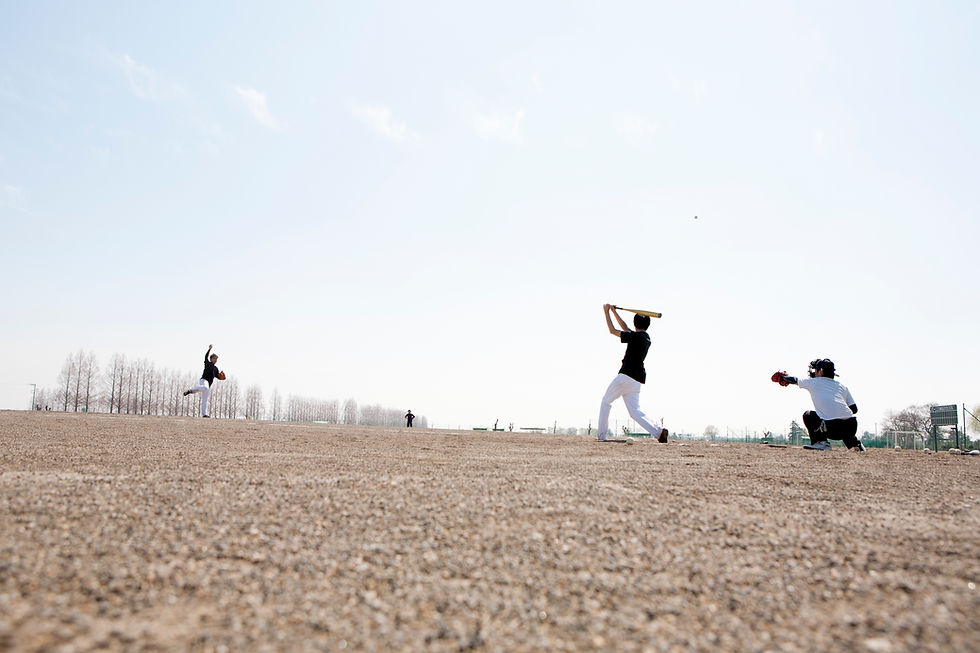What Mental Techniques Help Athletes Cope with Heat and Humidity in Competition?
- Alyssa Zajdel, PhD
- 4 days ago
- 3 min read

Competing in hot and humid conditions can test an athlete’s physical and mental resilience. This came up a lot when I was working with athletes in Florida! While physical preparation is critical—such as staying hydrated and acclimatizing to the environment—mental strategies are equally important to help athletes stay focused, manage discomfort, and maintain peak performance. Here’s a detailed look at the mental techniques athletes can use to thrive in heat and humidity.
Understanding the Mental Challenges of Heat and Humidity
Before exploring techniques, it’s important to recognize the specific mental challenges athletes face in these conditions:
Discomfort and Fatigue: Heat and humidity can cause physical discomfort, which can quickly affect mental stamina and focus.
Frustration and Irritability: Competing in extreme conditions may lead to frustration when performance doesn’t match expectations.
Loss of Focus: The combination of fatigue, dehydration, and discomfort can make it harder to concentrate.
Increased Stress: Athletes might feel added pressure to perform well despite the challenging conditions.
Mental Techniques to Cope with Heat and Humidity
1. Acceptance and Reframing
One of the first steps in managing challenging conditions is accepting them rather than resisting or complaining about the heat and humidity.
How It Helps:
Acceptance reduces emotional energy spent on frustration or negativity.
Reframing shifts the athlete’s perspective from "This heat is unbearable" to "This is an opportunity to demonstrate my mental toughness."
Example: An athlete might say, “Competing in this heat is tough, but I’ve trained hard, and I’m ready to handle it.”
2. Mindfulness and Present-Moment Awareness
Mindfulness helps athletes stay focused on the present moment instead of worrying about the discomfort or how much of the competition is left.
Techniques:
Body Scans: Regularly check in with the body to identify areas of tension and consciously relax them.
Breath Awareness: Focus on slow, deep breaths to remain calm and centered, even when the heat feels overwhelming.
Example: During a break or downtime, an athlete can take a few moments to breathe deeply and ground themselves in the moment.
3. Visualization
Visualization is a powerful tool to mentally rehearse performing well under specific conditions.
How to Use It:
Before competition, visualize competing in the heat and succeeding despite the conditions.
Imagine feeling strong, focused, and capable, even when the environment is challenging.
Benefits:
Builds confidence and prepares the mind to handle discomfort.
Reinforces a positive mindset, making the athlete less likely to be derailed by the heat.
4. Positive Self-Talk
The way athletes talk to themselves can significantly impact their performance and resilience in tough conditions.
Examples of Positive Self-Talk:
“I am prepared for this.”
“I’m stronger than the heat.”
“I can stay focused and push through.”
Why It Works: Encouraging and empowering statements can help athletes stay motivated and manage frustration or discomfort.
5. Chunking and Goal Setting
Breaking the competition into smaller, manageable segments (chunking) can make it feel less overwhelming.
How It Works:
Instead of focusing on the entire event, set short-term goals. For example, aim to finish the next lap, reach the next hydration station, or complete the next play.
Celebrate small wins, which keeps motivation high.
Example: A marathon runner might focus on reaching the next mile marker rather than the entire 26.2 miles.
6. Pre-Competition Routines
Establishing a strong mental routine before competition can help athletes feel grounded and ready.
Key Components:
Practice visualization and positive self-talk.
Review a strategy for pacing and hydration during the event.
Engage in calming activities, such as listening to music or meditating, to reduce pre-competition stress.
7. Focus on Controllables
Athletes often waste energy worrying about factors beyond their control, like the temperature or humidity level.
What to Focus On:
Staying hydrated and managing nutrition.
Adjusting pace or strategy based on the conditions.
Using cooling strategies, like ice packs or water breaks, effectively.
Mantra: “Focus on what I can control, let go of the rest.”
Building Mental Toughness for Heat and Humidity
Competing in heat and humidity requires a mindset that embraces discomfort and turns it into an opportunity for growth. Here are additional tips for building mental toughness:
Gradual Exposure: Train in similar conditions to build confidence and adaptability.
Track Progress: Keep a journal of how you’ve coped with past competitions in heat, and review your successes to build self-assurance.
Work with a Sport Psychologist: A professional can provide tailored strategies and techniques to enhance mental resilience in extreme conditions.
Conclusion
Heat and humidity can pose significant mental and physical challenges for athletes, but with the right techniques, they can maintain focus, manage discomfort, and perform at their best. By practicing mindfulness, reframing the challenge, and focusing on what’s within their control, athletes can turn tough conditions into an opportunity to showcase their resilience and determination. These skills not only help in competition but also strengthen mental toughness for future challenges.
Struggling to perform in extreme heat and humidity? Connect with a member of our sport psychology team to develop coping strategies tailored to you.

コメント